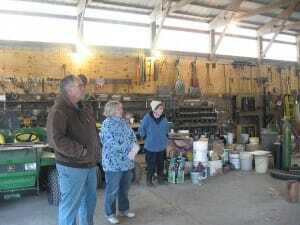You might say that farming is in Ben Rein’s blood. His great, great grandfather homesteaded around Highland, Minnesota, in 1884. Farming is a tradition that has continued throughout the generations.
“I’ve been farming for as long as I can remember,” says Ben, who grew up on a family farm and started farming full time in 1997 by custom baling hay and renting 160 acres. He shared equipment with his dad and uncle, who were farming together at that time. They ran a 100-sow, farrow-to-finish operation. They also raised 200 registered Angus cows, selling bulls and heifers. In 2005, Ben’s dad went to work for him. Today they grow corn and alfalfa. They also milk 65 cows and finish fat cattle.
Ben said he wanted to try Latham® products because the company is independent and family owned. He’s stayed with the company because the corn really yields. “I’ve been planting Latham for two years and have had a great experience,” he says. “The people I work with are very knowledgeable and accessible. The seed corn I used last year yielded 200 to 230 bushels, and it was the only corn that stood against the wind and rootworm issues we dealt with.”
While Ben tends to the crops and livestock, his wife Amber stays busy on the home front. The couple lives on the farm Ben’s grandfather bought in 1952, and it’s where they’re raising their five children: Steven, 14; Jaime, 12; Nora, 10; Kimberly, 8; and Rachel, 4.
 “Living on a family farm allows us to spend time together working and playing,” says Ben. “It’s the perfect place for kids to develop a good work ethic and to discover their interests. Some of our kids are interested in horses while others enjoy working with calves. There are just so many different things our kids can explore.”
“Living on a family farm allows us to spend time together working and playing,” says Ben. “It’s the perfect place for kids to develop a good work ethic and to discover their interests. Some of our kids are interested in horses while others enjoy working with calves. There are just so many different things our kids can explore.”
The Rein children are also involved in a lot of activities at school. During the summer months, they enjoy camping. During the winter months, Ben enjoys restoring antique John Deere tractors.
Like most farmers, Ben enjoys promoting the products he raises. Today, in honor of May Beef Month, the Reins are sharing one of their family’s favorite recipes for Sweet and Sour Meatballs. Crock-pot recipes like this are perfect for the spring planting season, so give it a try and let us know what you think!


















